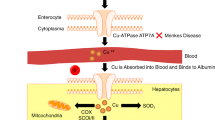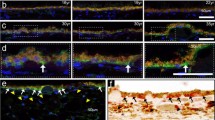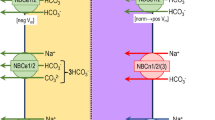Abstract
Vitamin C is a major antioxidant and UV absorbent in the human lens. In the rodent lens, the levels are very low for unknown reasons. Searching for clues to explain this suppression, we investigated the comparative uptake of Vitamin C in cultured human and mouse lens epithelial cells. When compared to human HLE-B3 lens epithelial cells, 14C-ASA uptake was 4- to 10-fold impaired in confluent mouse lens 17EM15 (p < 0.0001) and 21EM15 (p < 0.001) cells, respectively. High glucose concentrations reduced the uptake by 30–50% in all cells (p < 0.005). Incubation of cells with 6-deoxy-6-fluoro-ascorbic (F-ASA), i.e. a probe specific for the sodium-dependent Vitamin C uptake (SVCT2), revealed a 10-fold uptake suppression into mouse 17EM15 relative to human HLE-B3 and JAR choriocarcinoma cells (a control), that could be overcome by overexpressing hSVCT2 using two different promoter constructs. The relative Vitamin C uptake differences suggest either low expression of SVCT2, molecular differences between the transporters themselves or their biological regulation, since a recent study has shown that exogenous feeding of ascorbic acid to rats increased only modestly lenticular uptake (Mody et al., Acta Ophthalmol Scand 83: 228–223, 2005). Elucidation of the mechanism by which SCVT2 activity is suppressed in mouse lens may help unravel a major question of evolutionary significance for night vision in nocturnal animals.
Similar content being viewed by others
References
Monnier VM, Cerami A: Nonenzymatic browning in vivo: possible process for aging of long-lived proteins. Science 211: 491–493, 1981
Bensch KG, Fleming JE, Lohmann W: The role of ascorbic acid in senile cataract. Proc Natl Acad Sci USA 82: 7193–7196, 1985
Nagaraj RH, Sell DR, Prabhakaram M, Ortwerth BJ, Monnier VM: High correlation between pentosidine protein crosslinks and pigmentation implicates ascorbate oxidation in human lens senescence and cataractogenesis. Proc Natl Acad Sci USA 88: 10257–10261, 1991
Ortwerth BJ, Linetsky M, Olesen PR: Ascorbic acid glycation of lens proteins produces UVA sensitizers similar to those in human lens. Photochem Photobiol 62: 454–462, 1995
Cheng R, Lin B, Lee KW, Ortwerth BJ: Similarity of the yellow chromophores isolated from human cataracts with those from ascorbic acid-modified calf lens proteins: Evidence for ascorbic acid glycation during cataract formation. Biochim Biophys Acta 1537: 14–26, 2001
Simpson GL, Ortwerth BJ: The non-oxidative degradation of ascorbic acid at physiological conditions. Biochim Biophys Acta 1501: 12–24, 2000
Madaj J, Nishikawa Y, Reddy VP, Rinaldi P, Kurata T, Monnier VM: 6-Deoxy-6-fluoro-l-ascorbic acid: Crystal structure and oxidative degradation. Carbohydr Res 329: 477–485, 2000
Satake M, Dmochowska B, Nishikawa Y, Madaj J, Xue J, Guo Z, Reddy DV, Rinaldi PL, Monnier VM: Vitamin C metabolomic mapping in the lens with 6-deoxy-6-fluoro-ascorbic acid and high-resolution 19F-NMR spectroscopy. Invest Ophthalmol Vis Sci 44: 2047–2058, 2003
Nishikawa Y, Dmochowska B, Madaj J, Xue J, Guo Z, Satake M, Reddy DV, Rinaldi PL, Monnier VM: Vitamin C metabolomic mapping in experimental diabetes with 6-deoxy-6-fluoro-ascorbic acid and high resolution 19F-nuclear magnetic resonance spectroscopy. Metabolism 52: 760–770, 2003
Rumsey SC, Kwon O, Xu GW, Burant CF, Simpson I, Levine M: Glucose transporter isoforms GLUT1 and GLUT3 transport dehydroascorbic acid. J Biol Chem 272: 18982–18989, 1997
Andley UP, Rhim JS, Chylack LT Jr, Fleming TP: Propagation and immortalization of human lens epithelial cells in culture. Invest Ophthalmol Vis Sci 35: 3094–3102, 1994
Reddan JR, Kuck JF, Dziedzic DC, Kuck KD, Reddan PR, Wasielewski P: Establishment of lens epithelial cell lines from Emory and cataract resistant mice and their response to hydrogen peroxide. Lens Eye Toxic Res 6: 687–701, 1989
Reddan JR, Chepelinsky AB, Dziedzic DC, Piatigorsky J, Goldenberg EM: Retention of lens specificity in long-term cultures of diploid rabbit lens epithelial cells. Differentiation 33: 168–174, 1986
Liang WJ, Johnson D, Jarvis SM: Vitamin C transport systems of mammalian cells. Mol Membr Biol 18: 87–95, 2001
Liang WJ, Johnson D, Ma LS, Jarvis SM, Wei-Jun L: Regulation of the human Vitamin C transporters expressed in COS-1 cells by protein kinase C [corrected]. Am J Physiol Cell Physiol 283: C1696–C1704, 2002
Reneker LW, Chen Q, Bloch A, Xie L, Schuster G, Overbeek PA: Chick delta1-crystallin enhancer influences mouse alphaA-crystallin promoter activity in transgenic mice. Invest Ophthalmol Vis Sci 45: 4083–4090, 2004
Corpe CP, Lee JH, Kwon O, Eck P, Narayanan J, Kirk KL, Levine M: 6-Bromo-6-deoxy-l-ascorbic acid: An ascorbate analog specific for Na+-dependent Vitamin C transporter but not glucose transporter pathways. J Biol Chem 280: 5211–5220, 2005
Tumminia SJ, Qin C, Zigler JS Jr, Russell P: The integrity of mammalian lenses in organ culture. Exp Eye Res 58: 367–374, 1994
Varma SD: Ascorbic acid and the eye with special reference to the lens. Ann NY Acad Sci 498: 280–306, 1987
Varma SD, Richards RD: Ascorbic acid and the eye lens. Ophthalmic Res 20: 164–173, 1988
Hegde KR, Varma SD: Protective effect of ascorbate against oxidative stress in the mouse lens. Biochim Biophys Acta 1670: 12–18, 2004
Mody VC Jr, Kakar M, Elfving A, Soderberg PG, Lofgren S: Ascorbate in the rat lens: dependence on dietary intake. Ophthalmic Res 37: 142–149, 2005
Mody VC Jr, Kakar M, Elfving A, Soderberg PG, Lofgren S: Ascorbate in the guinea pig lens: dependence on drinking water supplementation. Acta Ophthalmol Scand 83: 228–233, 2005
Kannan R, Stolz A, Ji Q, Prasad PD, Ganapathy V: Vitamin C transport in human lens epithelial cells: evidence for the presence of SVCT2. Exp Eye Res 73: 159–165, 2001
Berger TM, Polidori MC, Dabbagh A, Evans PJ, Halliwell B, Morrow JD, Roberts II LJ, Frei B: Antioxidant activity of Vitamin C in iron-overloaded. J Biol Chem 272: 15656–15660, 1997
Koya D, King GL: Protein kinase C activation and the development of diabetic complications. Diabetes 47: 859–866, 1998
Delamere NA, Coca-Prados M, Aggarwal S: Studies on regulation of the ascorbic acid transporter in a cell line derived from rabbit non-pigmented ciliary epithelium. Biochim Biophys Acta 1149: 102–108, 1993
Kuo SM, MacLean ME, McCormick K, Wilson JX: Gender and sodium-ascorbate transporter isoforms determine ascorbate concentrations in mice. J Nutr 134: 2216–2221, 2004
Pirie A, Van Heyningen R: Biochemistry of the Eye. Thomas, Springfield, IL, 1956, pp 24–28
Lutsenko EA, Carcamo JM, Golde DW: A human sodium-dependent Vitamin C transporter 2 isoform acts as a dominant-negative inhibitor of ascorbic acid transport. Mol Cell Biol 24: 3150–3156, 2004
Reiss GR, Werness PG, Zollman PE, Brubaker RF: Ascorbic acid levels in the aqueous humor of nocturnal and diurnal mammals. Arch Ophthalmol 104: 753–755, 1986
Author information
Authors and Affiliations
Corresponding author
Rights and permissions
About this article
Cite this article
Obrenovich, M.E., Fan, X., Satake, M. et al. Relative suppression of the sodium-dependent Vitamin C transport in mouse versus human lens epithelial cells. Mol Cell Biochem 293, 53–62 (2006). https://doi.org/10.1007/s11010-006-2678-7
Received:
Accepted:
Published:
Issue Date:
DOI: https://doi.org/10.1007/s11010-006-2678-7




